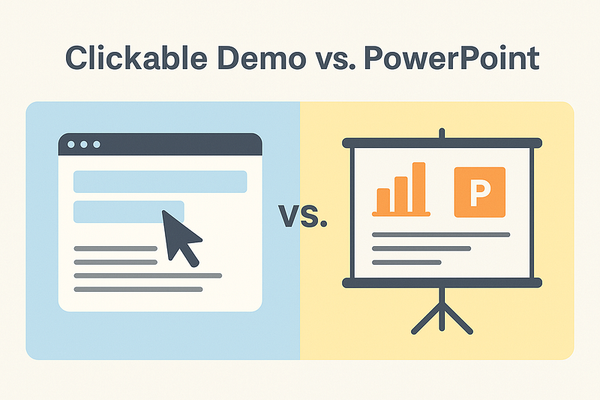AI at the Crossroads (Part 1): Why the Edge Matters More Than Ever
Let me be honest: I never thought I’d look back on the early 2010s with nostalgia, at least not for server racks and gear. But here we are…

Let me be honest: I never thought I’d look back on the early 2010s with nostalgia, at least not for server racks and gear. But here we are. If you spent any time building tech during those years, you saw it…the moment cloud computing stopped being just someone else’s computer and turned into something closer to magic. Renting what was basically a supercomputer with a credit card? It shook up everything, fast.
Remember When Cloud Was the Underdog?
There was a time when AWS felt like a scrappy side hustle for Amazon. Same with early Azure. These cloud services were born out of big companies realizing they had significant hardware sitting idle, consuming electricity, and collecting dust between bursts of web traffic. “What if anyone could use this stuff?” The rest, as they say, is history. Though I guess it’s still relatively recent history, depending on your definition of “old.”
At that time, AI wasn’t on anyone’s radar yet. The cloud was primarily used for hosting websites, storage, and running business applications. The idea of turning spare server capacity into flexible, on-demand compute was revolutionary…not because of AI, but because it made scaling and deploying apps easier, faster, and cheaper. Startups no longer had to buy expensive hardware upfront or maintain their own data centers. Instead, they could spin up virtual machines quickly, without waiting for hardware or navigating complicated IT departments. Cloud services like AWS and Azure made it possible to grow web businesses overnight, handle traffic spikes automatically, and focus on building products rather than infrastructure. AI computing, as we know it, would emerge later, riding the wave created by these clouds.
The Playing Field Was Flattened (Sort Of)
Cloud computing opened doors that were mainly closed before. If you were around back then, you’ll remember that it wasn’t about running wild ML experiments. It was regular folks, web developers, SaaS scrappers, and solo founders, finally skipping procurement purgatory and clicking “launch” on actual servers. Got a blog, a shop, or a little internal tool? For the first time, you could roll it out without praying for downtime, because you weren’t hand-rolling your own rack in a closet anymore. Everything from backup storage to traffic-hungry apps suddenly became possible for people who just wanted to build and hit “deploy.”
By the late 2010s, AWS was turning from an experiment into Amazon’s cash cow, and by 2023, almost seventy percent of their profit came from this corner of the business (CNBC, 2024). The character of developer work changed. Instead of writing arcane batch scripts or begging ops folks for a server, suddenly, you were deploying VMs and calling APIs from your laptop.
These moves paved the way for today’s world, where AI is a service and even complicated components are plug-and-play. But at the start, it was scaling web apps, SaaS dashboards, and boring old business logic, along with all the unglamorous plumbing of the early web, that made the cloud matter.
Of course, “cheap and easy” turned out to be relative…
If Only the Economics Stayed the Same
Here’s the part that folks forget when reminiscing about the cloud’s utopian early era. The big cloud players had extra compute to spare, and renting it out was more profitable than letting it idle. Margins were wild. For a while, society sort of lucked into an era of abundant GPU rentals, especially given how much AI research felt like moonshots or bets no one was sure would ever really pay off.
The OPEX magic, ‘pay only for what you use,’ was real. Suddenly, you no longer needed a seven-figure hardware budget or a server room with raised floors. You paid by the hour. Tech dreamers could just build, and if the budget ballooned, well, at least someone got venture dollars to cover it. Cloud was the rental supercomputer that let whole categories of apps and companies exist.
By 2024, researchers and analysts were already saying that a quarter of the global IT spend had switched to cloud.
Who Got Left Behind? Honestly, Not Many at First
I remember watching friends at early-stage companies scale from zero to a million users, and the cloud just handled it. Viral apps, weird chatbot projects, all kinds of SaaS tools. It felt easy, until it wasn’t. But for a stretch of years, “put it in the cloud” was the answer nobody questioned.
The thing is, every time someone figured out a clever new hack, the tooling and infrastructure almost always lived in the cloud. Part of me thinks we collectively decided to ignore the obvious limitations because the benefits felt so enormous.
Are the Storm Clouds Really Gathering?
As AI crept into everything, the cloud began to feel the squeeze as bills ballooned. Companies that reach an inflection point sometimes find their cloud costs have doubled in a quarter. That trend has only worsened…just ask anyone who has integrated a cloud-based generative AI service lately. And as models grew larger, the infrastructure demands became more demanding. Suddenly, those idle GPUs? Gone. Now, there’s a global chip shortage, and…well, you don’t need another chart showing how much power data centers use, but it’s substantial.
Kate Crawford (MIT Technology Review, 2024) summed up the other looming risk: Massive cloud-based AI is straining public resources — water, electricity, land. The move to edge intelligence not only reduces these footprints but also gives communities more sovereignty over their data and computation. If you have ever had to think about the actual physical footprint of your bot, you’re probably nodding right now.
And yeah, risks. Security, regulation, privacy complaints, every region has its patchwork of laws. It’s not just about tech debt anymore.
Something Has to Give (Previewing What’s Next)
Centralization solved the problems of its era. However, if you speak with people who are shipping and deploying AI right now, it’s clear that the old answers don’t scale indefinitely. Cloud worked when it was a small slice of global compute usage, when there was bandwidth to spare and bills no one looked too closely at. Now, with AI as the backbone of…well, almost everything, that logic’s under a lot of pressure.
I suppose what I’m saying is that cloud was the party that put AI into everyone’s hands. However, the costs are now real, and so are the frictions. I’ve started to think AI’s next act is going to look a lot less centralized. Though how messy or elegant that transition will be, your guess is as good as mine.
The other thing? We’re starting to hear a lot about the “hard-tech” era as hardware is back at the forefront. Robots, cars, sensors, local compute, even cooling and power grids. Suddenly, folks who know how to run a datacenter or optimize an edge device aren’t just “ops” people. They’re the cornerstone of the next big shift. Sometimes it seems like the biggest advances on the horizon won’t just be about what code can do, but about what the machine underneath is capable of.
So, what’s on the other side of the fence? In Part 2, we’ll pick up the story right as the bills start coming due and folks realize it’s perhaps time to consider running AI much closer to home. We’ll also start digging into what it actually means to bring AI closer to the edge and why some of the smartest teams in the industry are already doing it
(Data sources: AWS/Cloud revenue from CNBC, 2024; cloud adoption from IDC, 2024; Kate Crawford on environmental cost in MIT Technology Review, 2024. Satya Nadella’s quote from Microsoft Build 2024)


